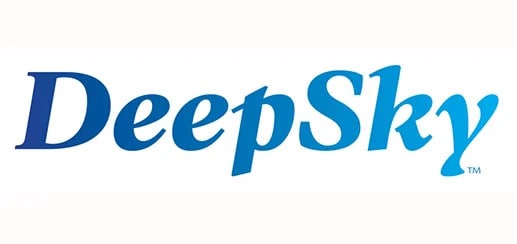Find the best Warehousing & Fulfillment company by filling out the form below, or Click Here to continue reading our page Review of Fulfillment by Amazon vs. Fulfillment by Merchant
E-commerce merchants need a place to store their products until they are sold, and someone to ship the product to the customer when it sells. They can choose between Amazon’s Fulfillment by Amazon (FBA) service or an e-commerce fulfillment center. They may also need the services of a hybrid, Amazon prep service.
With FBA, the merchant sends their products to an Amazon warehouse, and they are stored there until somebody buys the product. At that point, Amazon ships the product to the customer using their own internal Amazon fulfillment centers.
FBA will also serve as a fulfillment center. It will store products and ship them to customers even though the actual sale was made on the merchant’s own web site. Officially Amazon calls that multi-channel fulfillment.
Amazon warehouse employees and robots work around the clock. When a customer orders your product, the notification immediately goes to a warehouse. If it’s 2 a.m. you wouldn’t see the email until you wake up the next morning. Neither would another fulfillment center you outsourced to.
1. Cost
There’s no absolute guide, and it varies by such factors as:
This article will cover the costs in detail. This link is a beginning.
However, as a general rule, companies moving a large amount of units through e-commerce channels will save money by using good warehousing companies instead of FBA.
2. Restrictions
Some products are restricted from FBA. The list is here. They limit the amount of your inventory space depending on sales. They will not store inventory more than a year. After that, they charge you for the cost of shipping it back to you, or they will destroy it for you, letting you pay for that.
Chances are that you stumbled upon this page because you’re considering using Fulfillment By Amazon (FBA) as a fulfillment solution for your business. While we can’t argue with Amazon’s proficiency with fulfillment, there are numerous other cons to using their highly touted service and Amazon FBA testimonials should be thoroughly looked at before moving to any Amazon distribution services. Consider these points, and talk to some of the best fulfillment companies before signing on the dotted line.
You can use Amazon FBA to fulfill orders you take through your own website or Shopify fulfillment. That’s multi-channel fulfillment, which has its own costs. Here’s the FAQ on MCF.
However, all the same disadvantages apply.
Amazon is a beast. They pull in sales of over $51 billion dollars a year with a net profit of $1.6 billion. They’re lucrative because they are always innovating. Amazon’s most recent venture promises to prep your stuff. The company now offers a full range of packing services called FBA (Fulfillment by Amazon) Prep. But are they really the best 3PL companies out there for your business? And do they have your best interests in mind?
Fulfillment by Amazon (FBA) has packaging and prep requirements for any product that lands in their fulfillment centers. Their sentiment is that when units are properly packaged and prepared it reduces delays, saves on cost, protects your product while stored, and enhances the customer experience.
Previously, Amazon required you to prepare inbound shipments and goods in certain ways, but they didn’t provide a service to help facilitate these preparation services. But now Amazon has some warehouses that are being dedicated to packing and prepping for FBA. They essentially prepare products to send to Amazon DC’s. Amazon then does all of the shipping.
However, some of these requirements can be very restrictive and they will not ship your product if they don’t conform to their policies. Therefore, it’s always best to double check rather than losing revenue. You might also consider looking into a third-party fulfillment center to see what their requirements are. They may necessitate cheaper materials that could make all the difference in the world for your budget.
If you decide to use FBA Prep, Amazon will pack all eligible products for a per-unit fee. After enabling the service, you choose Amazon to prep the products that you ship to fulfillment centers. Once you build a shipping plan, Amazon will provide an estimate of fees based on those schematics. So, the process can be a tad lengthy, and you have to jump through a number of hoops.
Then the FBA Prep process begins. Consider the following:
When it comes to ticketing, Amazon still expects the vendor to not only create shipping plans but print the labels too. This is so they can track the inbound shipments. A third-party vendor may make it easier on a business by creating the plan themselves.
Rather than bundle units, Amazon has been known to break them up when necessary. As they state on their site “Your qualifying units may be split into multiple additional shipments.”If you seriously need bundled shipments, Amazon may not be the best choice.
Amazon will ship glass and other fragile items. The FBA Prep service includes bubble wrapping and labeling.
Amazon does not shrink wrap anything. They bag the following: liquids, apparel, fabric, plush, textiles, baby products, small, and adult. If you seriously need your product shrink-wrapped, a third-party fulfillment center might be your best choice.
When you have Amazon prep your products, FBA Label Service may be applied to certain items and you will be charged a fee. Same with anything that requires an Amazon barcode. There have been issues with Amazon surprising people with hidden label fees, so keep your eyes peeled.
Amazon is not the only place to offer a prep and pack service. Many 3PL companies also have this on the menu. And by working with another fulfillment center you may save on overall costs. Amazon is notorious for hidden and “surprise” fees. These tacked onto your order could cripple a budget. Oftentimes, third party fulfillment centers will offer preparation services for FBA at a reduced cost as opposed to using Amazon’s prep service.
Furthermore, using 3PL warehousing companies offers a host of other benefits. First, these outsourced fulfillment services enable multi-channel shipping through other online platforms. So, if you do business on your own website, or other marketplaces like e-bay and Etsy, it’s ok.
Finally, using a third-party fulfilment house allows you to avoid Amazon’s dreaded long-term storage fee penalties.
Surprisingly, Amazon doesn’t want you to overstay your welcome using Amazon warehousing. The company will charge you a fee if you store at their warehouse for too long. It’s referred to as the “FBA long-term storage fee.” On the 15thof every month the company conducts a cleanup of their inventory.Inventory that has been in fulfillment centers for 181 to 365 days incur a long-term storage fee (LTSF) of $3.45 per cubic foot for FBA inventory.
Items that have been in US fulfillment centers for more than 365 days on the inventory cleanup date incur a long-term storage fee of $6.90 per cubic foot. And it goes up from there. This is what leads to long term storage avoidance. Nobody wants to work with Amazon if they can’t afford to store their stuff.
There are many programs and apps you can install that will use data based on SKUs to help you identify long-term stock issues. Additionally, if you think an item will take a long time to sell, wait until just after the 15thto list. This will give you the maximum time.
Of course, you can avoid all of this noise by working with a third-party fulfillment center. The long-term storage fee is mostly unique to conglomerates like Amazon and is rarely something you would see with traditional third-party warehouses. Long term storage fees are a serious business and why risk having your stuff held hostage?
Though nearly 60% of all eCommerce sales are through Amazon, merchants don’t all ship from an Amazon fulfillment center using FBA. In fact, many ship from the seller’s themselves, or a third-party fulfillment center that a vendor entrusts with this aspect of their business. Below are the two of the major options you have as an Amazon vendor when it comes time to fulfill orders:
What’s the difference? In a nutshell, the FBM orders are those that are sent out by the merchants or vendors who sold them. The latter involves the same merchant, but now they have access to Amazon’s Prime members, allowing the merchant to display the coveted Prime badge but letting you ship by yourself or using your third-party fulfillment company of choice.
Obviously, it might automatically seem that the SFP is a way to really leverage your position within the Amazon marketplace, but it may not be the ideal approach for all. Getting into the program is actually quite rigorous (we will review that a bit later), and it does not free you of the burden of owning and operating a warehouse. It also has fairly rigid guidelines around issues like refunds and you also have to consider sfp 3rd party fulfillment pricing. Before heading any further into a discussion about SFP, though, let’s first look at the classic Amazon Seller Fulfilled orders.
If you want to figure out which Amazon fulfillment model is right for you – where self managed models are the focus – it’s best to begin with their basic sales model. It features formal order processing guidelines as well as cancellation policies. Amazon also provides sellers with very expansive order management guidelines where their specifications are clearly laid out, too.
By managing your own fulfillment and shipping, either in-house or through the use of a fulfillment center, you gain certain advantages over using FBA:
Of course, on the downside, you’ll have to manage the fulfillment – either in-house or through a third party. Furthermore, you’ll have to adhere to strict guidelines. In some cases, you have to meet certain standards for orders processed per month over a period of time in order to be eligible for shipping during the busy season. Be sure to check Amazon’s policies, as they change frequently.
If the seller fulfilled model is not your preferred approach, the SFP is (as stated) a way to reach the entire Amazon market, and gain access to the more coveted Prime members. Why coveted? Just consider what one authority had to say of the Prime buyers, “Prime members are typically big spenders all year round. On average, members – and there are close to 50 million of them – spend around $1,100 per year, compared to about $600 per year for non-members.”
Thus, making your merchandise eligible for Prime is likely to help increase sales while also giving you total control over inventory, and allowing you to access other markets. However, this access comes at a price – strict requirements. First, you have to be eligible for Amazon Premium Shipping (which is a status to be gained and then maintained). This is done by having a 30 day record of on time deliveries at a 92% rate for Premium Shipping orders; a valid tracking ID for at least 94% of Premium Shipping orders; and a cancellation rate of less than 1.5% of Premium Shipping orders.
You don’t need to be eligible to participate in your Prime trial, but will need to obtain and maintain it to join SFP. Once you are enrolled in SFP, you have to meet the Prime performance requirements throughout the trial, which include
You will also agree to program terms for Prime items, and these include buying all labels for orders with a Prime item through Amazon’s Buy Shipping Services; direct all post-order customer service to Amazon; follow Amazon’s returns policies; and offer Prime shipping benefits and guaranteed delivery dates. The latter means free two day shipping to all addresses in the continental U.S. or free standard shipping to addresses in Alaska, Hawaii, and U.S. protectorates. Sellers will also have to offer free shipping to Prime members who opt for delivery options slower than the Prime shipping benefits for which they are eligible, and offer all buyers free economy shipping on prime items whether or not they are a Prime member.
Which is right for you? If you really want to leverage your position on Amazon, and enjoy optimal controls, the SFP is worth the effort to enter, and is something you will want to consider starting soon. Whether you use a fulfillment center or handle it on your own, the Prime members are poised and eager to purchase, and Amazon is leading the eCommerce world, making it a combination and opportunity not to be overlooked lightly.
Many Third-Party Logistic (3PL) services that will store your products and ship orders to customers for you. Visit our homepage to learn more about order fulfillment services companies or click here to learn more about FBA alternatives. Costs vary depending on your product and what you require. However, the basic expenses are:
We also created another resource for you to see in depth fulfillment costs and pricing. Click here to view the in depth information on what fulfillment companies charge. But don’t forget – if you’re going to use an outsourced fulfillment service for Seller Fulfilled Prime, you’ll need to make sure they have the ability to deliver 2-Day shipping across the country!
The first cost of using either Amazon FBA or another fulfillment center, is shipping items to them. That’s inbound shipping.
FBA has numerous requirements about product packaging. Most products require polybags. If the opening is larger than 4 inches, the bag must have a suffocation warning. These bags, plus brown paper, tape, cardboard boxes, shrink wrap and bubblewrap are available for sale from office supply stores, eBay, Amazon and wholesalers. In general, the more you buy, the cheaper they are per unit.
There’s little difference here in terms of expenses because whether you use FBA or a fulfillment center, you must still pack and box your items so they are ready for the center to send them to customers. For fulfillment center you don’t have to follow Amazon’s guidelines, but you still want the packages strong and secure to safeguard your products.
If you ship them directly to an Amazon FBA warehouse, you can take advantage of using Amazon’s account. Because they are United Postal Service’s biggest customer, sending to an FBA warehouse will cost you less than UPS will charge you to send to a fulfillment center.
The UPS pricing guide can be used for ordinary customers. However, Amazon has partnered with UPS. When you ship products to an FBA warehouse, you pay only Amazon’s rates. They will still of course vary based on weight, size and number of boxes. The more you ship, the less you pay per pound.
According to UPS, the discount for Amazon FBA sellers runs from 8.5-23% for UPS ground service. That charge and more details are available at this link.
The dimensions of the box also affects the price.
However, you can’t make a simple one to one, FBA to fulfillment center inbound shipping cost comparison because Amazon complicates things in another way.
They have warehouses spread over the country, and keep building more. They do everything they can to reduce the time the customer waits for their packages. That means they want your products in the warehouse or warehouses closest to most buyers. They have lots of buyer data, including geographical location.
Unless your products appeal to people only in one specific location, it’s very likely they will want you to send your items to different warehouses. If you plan to ship 500 units at a time, they may instruct you to ship 100 units to Warehouse A, 100 units to Warehouse B and so on. That’s what they call Distributed Inventory Placement, and it’s the default.
But dividing up shipments does make them cost a little more, besides being a hassle. What if you don’t want to do that?
With this program, Amazon allows you to send all 500 units to a single warehouse (designated by them). However, they charge a fee. Amazon adds these fees up and charge your FBA Seller Central account at the end of the month.
It’s up to you. However, you will save a little money per unit if you just go with Amazon’s default Distributed Inventory Placement. Also, remember that Amazon knows more about its own processes and shipping times to customers than you do. The sooner customers receive their packages, the happier they are. That’s why Amazon splits up merchandise. Fast delivery is good for your reputation as well.
In effect, going with Inventory Placement Services is paying to argue with the world’s largest and most successful e-commerce company.
Therefore, when making the estimate cost comparisons between using FBA and fulfillment centers, this article assumes you do not add the cost of Inventory Placement Services to the total expenses of using FBA.
Shipping to Amazon FBA requires you to apply bar code stickers to each unit of your products. Amazon supplies the information, but you must print them up. You can use simple removable stickers that you can buy from an office supply house or a seller on eBay or Amazon.
Amazon will do that for you, but it costs 20 cents per label that is not a necessary expense.
Amazon does not charge any set-up fee to list a FBA product.
Fulfillment centers do typically charge initial set-up fees to put you and your products into their system and to integrate with your site’s shopping cart. These fees can range from hundreds to thousands of dollars. Obviously, this may not be the option for you if you’re small, part-time and just testing the water, although there are fulfillment companies that focus on such companies and have little or no minimums and not set up fees. Paying such high set-up fees are only appropriate for companies who will remain with the fulfillment center for at least a year.
Amazon does charge $39 a month for a professional FBA Seller Central Account.
This is a great tool Amazon provides. Amazon designed it for merchants to calculate their total profit both if they sell on Amazon and sell on their own website. Although many FBA sellers use it to find out what the per unit costs are on FBA to test our prices and profit margins, there are also fields for such costs as prep service and inbound shipping costs, which you have to determine and input. You can also use their video as a good introduction to using the calculator, but it doesn’t include sold MCF expenses.
The below is a list of fees for using Fulfillment by Amazon versus a standard order fulfillment company.
If it’s an Amazon FBA warehouse, you’re charged 20 cents per unit if you do not put the sticky UPC labels on yourself.
If you did it yourself, there’s no charge.
If you are using a fulfillment center, you will pay a per unit charge or $30-$40 per hour it takes for their workers to store your product.
Fulfillment centers will charge this on a regular basis (usually monthly). Costs vary from $8-$15 per pallet or by the cubic foot.
Amazon charges a storage fee when each item sells. They fees on the size of the item and the length of time it’s been in the warehouse. And they charge more in November and December.
However, these fees will go up if your product is not turning over. And if it’s still in storage after one full year, Amazon will either return it to you or, if you prefer, destroy it for a fee.
This is a fee Amazon charges for selling an item on their site. It doesn’t apply to off-Amazon sales.
It’s 12% of the sales price or, in some categories, a set fixed per unit price.
For standard-sized items priced below $300 and sold on Amazon, it’s $1.00.
For standard-sized items sold on your own site, it depends on the shipping method the customer selected: Standard, Expedited or Priority?
For fulfillment centers, the charge for fulfillment is $4-$8 plus an item fee. It includes Pick & Pack, though Amazon breaks out Order Handling and Pick & Pack as two separate items.
For standard-sized items sold on Amazon, it’s $1.06.
For standard-sized items sold on your own site, it’s $0.75.
This charge is only for items sold on your own site. The charge goes up with the item’s weight and the shipping method chosen by the customer.
If you sold the item on Amazon through FBA, there’s no charge to you the merchant.
If you sold the item through FBA MCF, Amazon charges you the Order Handling Fee and the Weight Handling fee. Therefore, when you sell a product on your own site and FBA fulfills it, you must collect the shipping charge from the customer on your site.
Here’s Amazon charts for the fees for FBA fulfilling orders not made on Amazon.
If you are using a fulfillment center, you must pay the warehouse $2-$8 (and in some cases lower if you have high volume) plus a per unit fee. Also, you must pay the UPS shipping charge. As a large customer of UPS, the fulfillment center probably pays lower rates than you do, though probably not quite as low as Amazon.
This is an example using a standard-sized product that weighs only 1.1 pounds. The FBA Revenue Calculator says the expenses are:
Multi-Channel Fulfillment: N/A
FBA sold on Amazon: $2.63
MCF: Varies with type of shipping, so in effect it’s a charge you make your customer pay for when they buy on your site.
FBA sold on Amazon: $1.00
MCF: N/A
FBA sold on Amazon: $1.06
MCF: You collect it from the customer
FBA sold on Amazon: N/A
MCF: The weight affects the shipping cost, so it’s part of the shipping you collect from the customer on your site.
FBA sold on Amazon: $1.95
MCF: .05
FBA sold on Amazon: .05
If you use a fulfillment center, you pay from $2-$8 and whatever the center charges per item. You must also pay the shipping charge, so you need to collect that from the customer.
Therefore, when an item sells, the fulfillment center charges are generally less. However, you are paying their storage fees until the item sells.
Some FBA sellers use Amazon prep services. These are warehouses and packagers. They do not fulfill customer orders.
You send them your products. They pack them up to meet all of Amazon’s FBA requirements, then ship them to Amazon for you. They often have experience as Amazon sellers themselves, so they know the rules. They buy boxes, compliant polybags, bubble wrap and other packing materials in bulk. They ship in bulk. Therefore, they take advantage of economies of scale for these expenses that not available to sellers. However, their margins are slim.
Some Amazon prep services will accept shipments from outside the United States, helping you to handle customs, before repacking the items and sending them to FBA. For a fee, some of these will also inspect all the items to certify they are not broken.
To view a list of companies that offer strictly Fulfillment by Amazon “prep” services, click here.
These services are great for Amazon sellers who:
Merchants who produce their own products, who have the time or hired labor to perform the require packing or who can and want to oversee quality control can do it themselves. That also applies to small retail arbitrageurs who have the time and space to send their products to Amazon.
Whatever your situation, Fulfillment Companies can help you weigh the factors that apply to you and your business. We will help you decide between Amazon FBA, fulfillment centers and prep services, so contact them today.
Below are some of the other general thoughts from the warehouses in our network about Amazon FBA and their fulfillment network:
Your contact information is held in the strictest of confidence. We will contact you before we connect you with vendors so that we can learn about your situation, obtain any of your contact preferences, and answer any of your questions.
YOU have control over your contact details:
We Care About Your Privacy. Your information is shared with only pre-screened providers. You may opt out of communication at any time. View our Privacy Policy.

I want to say thank you for your help in finding a warehouse so quickly. Your service was amazing. I received replies the same day and have selected a company that will work well for us. I definitely recommend your services.

I wanted to express my gratitude for your services and let you know that it was a very enjoyable experience! We have selected one of the companies and they are awesome!

You are doing such a great job and this service that you provide is a life saver for people especially startups like me....We cannot spend budgets on researching as much as the big firms can...and you provide us one stop solution which will answer all our questions.

I just wanted to let you know that I selected one of your vendors as our fulfillment house. They can do what we need and we’re looking forward to working with them. They can handle our “special projects” fulfillment, which was key to our decision in bringing them onboard. I appreciate this service. It was great for our company.

I didn’t know there was so much difference in fulfillment companies — this was my first time in need of this sort of service. After a Google search I luckily stumbled upon WarehousingAndFulfillment.com. They saved me an incredible amount of time and money. Within minutes I had a couple of emails from good companies that fit my situation. I am very appreciative of their help.

Warehousing and Fulfillment was the perfect matchmaker in finding us a fulfillment partner. They provided several great options, all of whom were very responsive and willing to take the time to talk through our needs. We ended up going with W&F’s top match and we couldn’t be happier. I highly recommend W&F, particularly to anyone whose business relies on a strong fulfillment partner.

We were having multiple issues with our 3PL fulfilling warranty replacement parts. Our company needed to make a change and make one fast. I reached out to WarehousingAndFulfillment.com to facilitate my search for a reputable, service oriented 3PL that can handle the demands of a highly seasonal business to pick, pack and ship parts quickly. I received several qualified 3PL leads that matched what we were looking for. After reviewing and speaking with many one stood out from the rest, and we found a great partner. We could not recommend WarehousingAndFulfillment.com enough.

We found the perfect third-party fulfillment vendor through insightQuote. We never would have found them on our own. We can’t thank you enough and our customers thank you too.

Thanks for all of your help. This was a huge undertaking for us and your guidance was extremely helpful!

Thank you so much for your excellent service. We have chosen one to go forward with. This has saved us a great deal of time.

They really listened to our requirements and then matched us with great vendors that could meet our specific challenges.

I just wanted to say thank you so much for setting me up with these vendors. I have found pricing better than I ever expected to find.

Legit, this was such a good experience ... I was shocked how fast the vendors contacted me and got the ball rolling. This was such a pleasant experience

What an awesome service. A problem I fought with daily for over 3 weeks, solved in less than 24 hours.

 View More
View More
Get fulfillment tips delivered to your inbox!